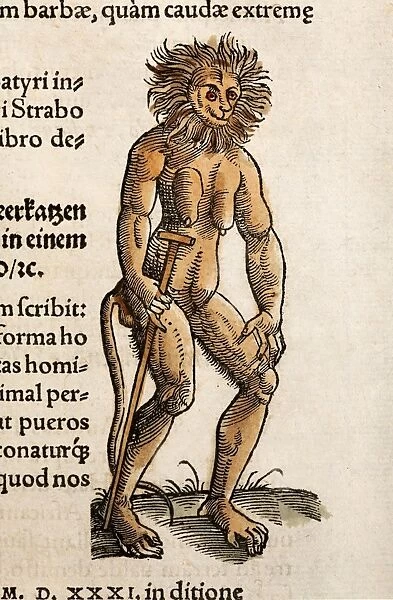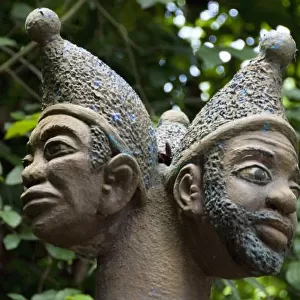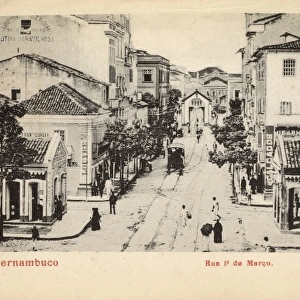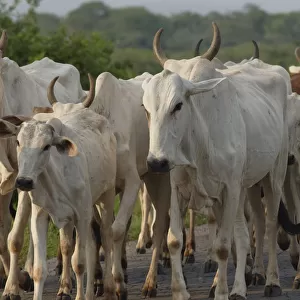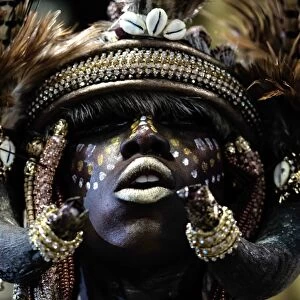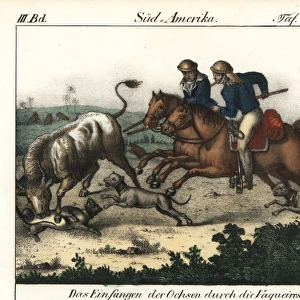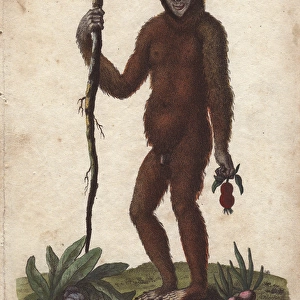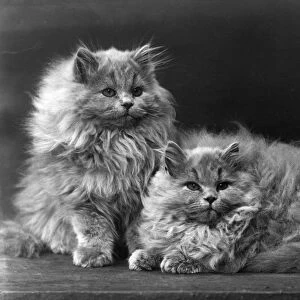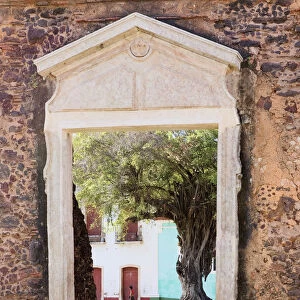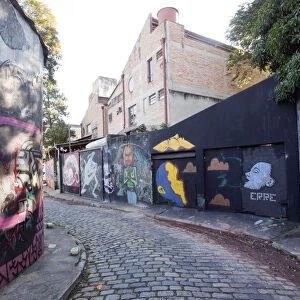Gesner A Satyr, simian or wild man
![]()

Wall Art and Photo Gifts from Science Photo Library
Gesner A Satyr, simian or wild man
Woodcut with early colouring from Conrad Gesners " Icones Animalium" 1557. Publ. Christof Froshover, Zurich. Gesner takes this image from Breidenbachs " Journey to the Holy Land" (1468). According to Gesner " the animal has a face of human shape and proportions, and could be regarded as a wild man". This image is very persistent through the literature - Hoppius in his thesis to his teacher Linnaeus copies this image and gives it the latin name of Homo caudatus hirsutis - a form within the human group (see also orang utan). It seems likely to have been inspired by a primate but the long tail suggests it is not an ape
Science Photo Library features Science and Medical images including photos and illustrations
Media ID 6347123
© PAUL D STEWART/SCIENCE PHOTO LIBRARY
16th Century Animalium Bestiary Colour Conrad Cryptozoology Early Folk Lore Gesner Gessner Historiae Homo Icones Middle Ages Monkey Natural History Orang Satyr Simian Wood Cut Sylvestris
EDITORS COMMENTS
This print showcases a woodcut with early coloring from Conrad Gesner's "Icones Animalium" published in 1557 by Christof Froshover in Zurich. The image depicts Gesner's interpretation of a creature he refers to as "Gesner A Satyr, simian or wild man". According to Gesner, this animal possesses a human-like face and proportions, leading him to classify it as a wild man. Interestingly, this particular depiction has been widely referenced throughout literature. Hoppius even adopted the image for his thesis under Linnaeus, giving it the Latin name Homo caudatus hirsutis - suggesting its connection to the human group. Although inspired by primates due to certain characteristics, such as facial resemblance and proportionality, one distinct feature sets this creature apart: its long tail. This distinguishing factor suggests that it is not an ape but rather something unique within the realm of natural history. The artwork itself represents an early example of illustration from the 16th century and holds significant historical value. It combines elements of folklore and cryptozoology prevalent during the Middle Ages when bestiaries were popularized. Paul D. Stewart skillfully captures this piece in his photo print, allowing viewers to delve into the fascinating world of Conrad Gesner's imagination and explore humanity's curiosity about mythical creatures intertwined with scientific inquiry.
MADE IN THE USA
Safe Shipping with 30 Day Money Back Guarantee
FREE PERSONALISATION*
We are proud to offer a range of customisation features including Personalised Captions, Color Filters and Picture Zoom Tools
SECURE PAYMENTS
We happily accept a wide range of payment options so you can pay for the things you need in the way that is most convenient for you
* Options may vary by product and licensing agreement. Zoomed Pictures can be adjusted in the Cart.

